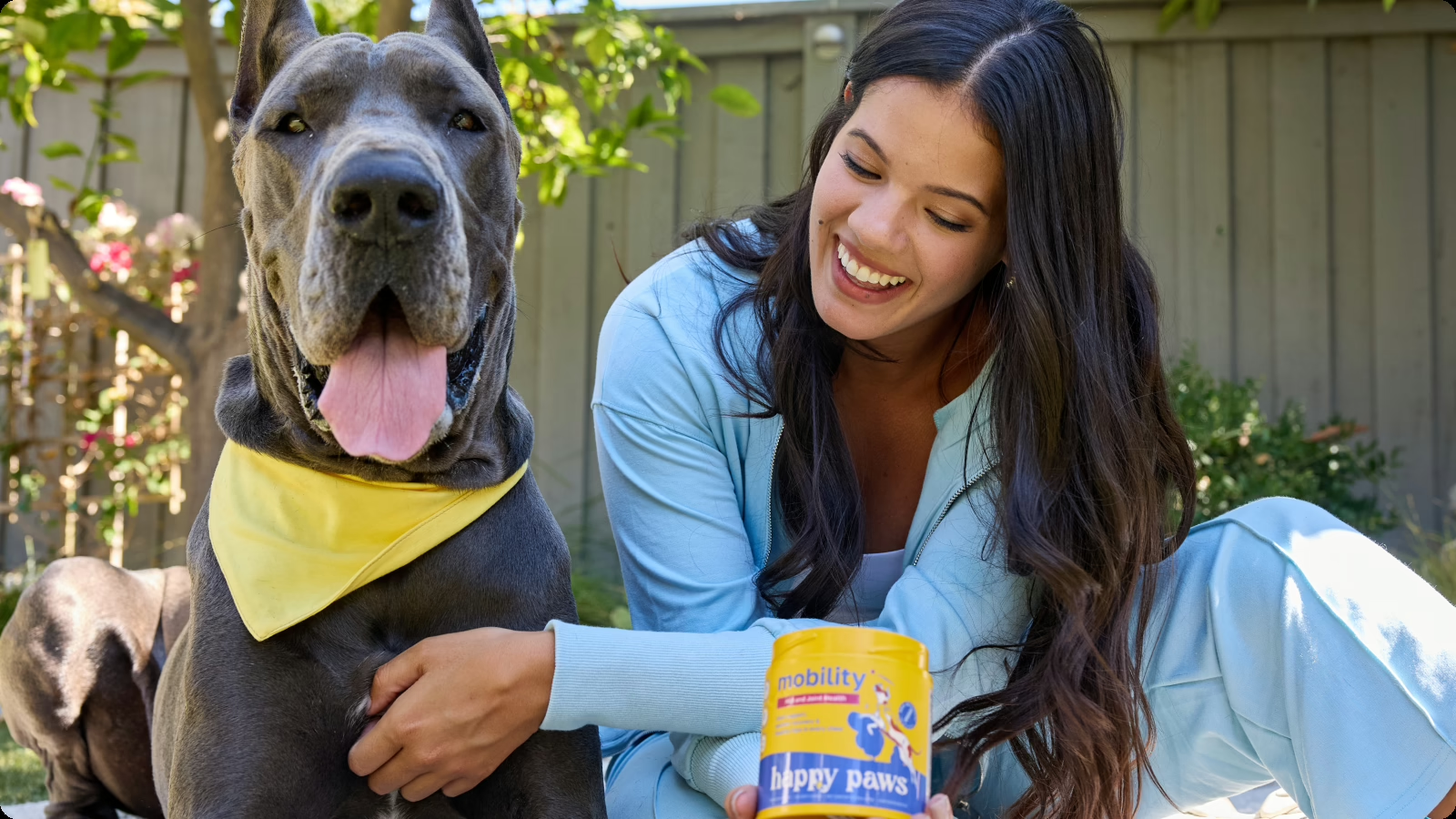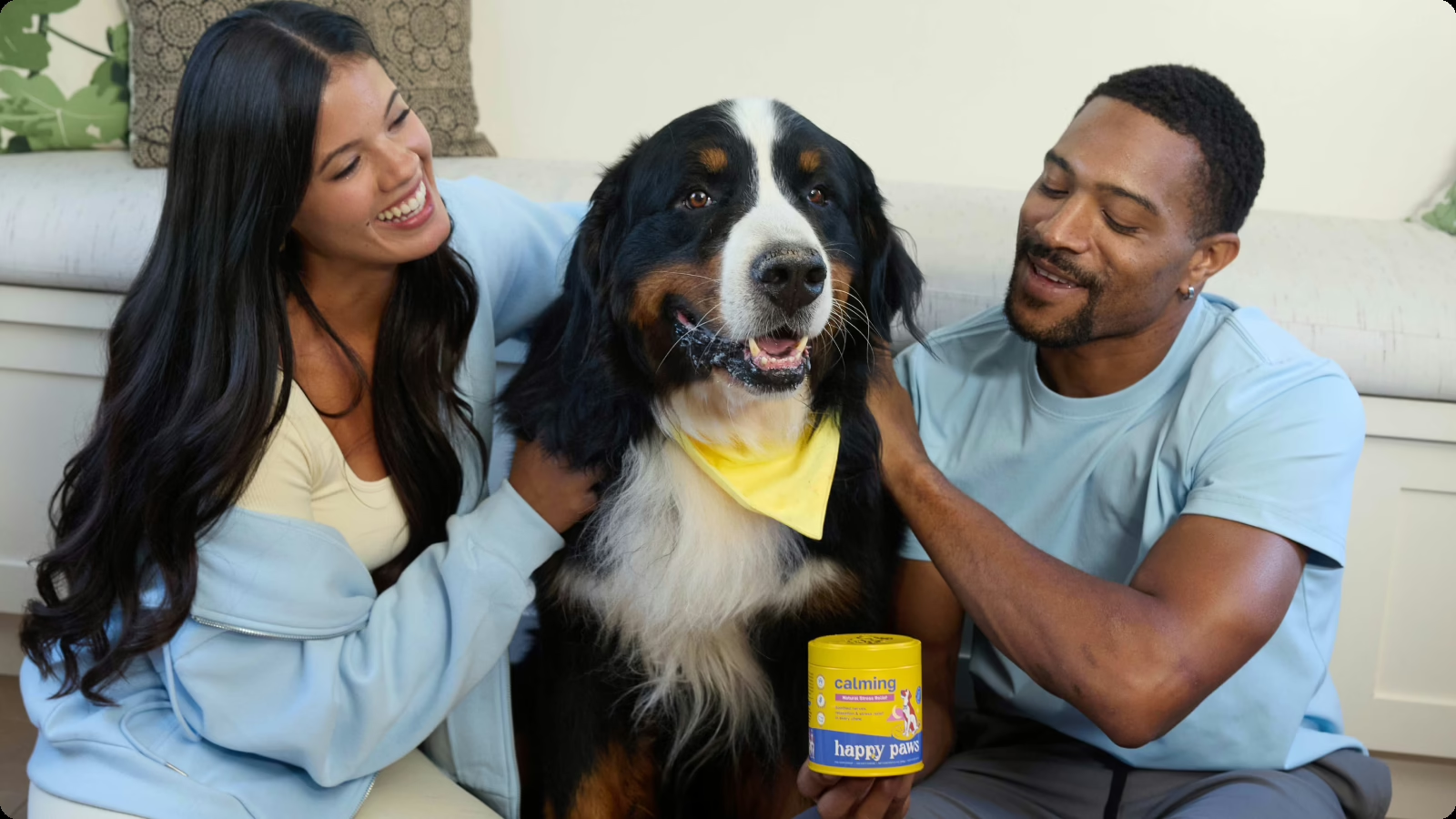If I had a biscuit for every time someone asked me, “Why is my dog doing that?” I’d have enough to fill a treat jar the size of a doghouse. Behavior questions are that common—and for good reason. Most dogs can’t “talk,” so changes in behavior are often their first language when something’s not right.
Behavioral questions come up all the time in veterinary medicine.
I often feel like I’m acting as a translator between people and their pets. Sometimes, I’m reassuring an owner that something is perfectly normal, like an occasional reverse sneeze. Other times, I’m urging them to take something more seriously, even when they think it’s nothing.
Some behaviors are totally normal, like the Zoomies. Others are worth keeping a closer eye on, especially when they appear suddenly or become persistent. These behaviors don’t necessarily mean something is wrong, but they are your dog’s way of communicating with you. And sometimes, they’re the earliest clue we get that something deeper is going on.
Here are seven of the most common “weird behaviors” I’m asked about—and what I’m thinking when I see or hear about them.
1. Sudden Bursts of Energy (Zoomies)
This one is usually good news. Those wild, sprinting, zigzag laps around the yard or living room? That’s joy.
Dogs often get the Zoomies after a bath, when they’re excited about play, or just because they feel great. As long as your dog isn’t hurting themselves or others, enjoy the show. Zoomies are often a sign of good welfare and a happy dog.
2. Compulsive Spinning in Circles
A joyful spin before dinner? Totally normal. But if your dog is spinning frequently or frantically, especially in one direction, that’s worth investigating.
I start thinking about anxiety, obsessive-compulsive behaviors, or even early neurological concerns. If your dog is spinning often or obsessively, schedule a veterinary exam. For dogs with stress-related behaviors, I often recommend a high-quality calming supplement, like Happy Paws Calming Chews, as part of the plan.
The sooner we intervene, the better the outcome … especially if the behavior is new or escalating.
3. Stress Signals: Panting, Yawning, Lip-Licking
These are subtle signs, but important ones. I see them all the time in the clinic, especially in the waiting room or on the exam table.
If a dog is panting heavily, yawning repeatedly, or licking their lips while avoiding eye contact, they might be showing signs of stress or anxiety. If that same dog relaxes with some peanut butter and the owner says they’re calm at home, I’ll often start conservatively and recommend bringing them in for a few “happy visits” (just treats and NO treatments!), along with a calming supplement like Happy Paws Calming Chews before the next real visit.
Sometimes that’s all it takes. In my experience, catching and addressing mild stress responses early can help avoid development of full-blown fear responses down the road.
4. Eating Poop (Coprophagia)
It’s gross … and surprisingly common. Eating poop increases the risk of internal parasites, and once the behavior starts, it can become a tough habit to break.
Coprophagia can stem from boredom, gut imbalances, or even nutritional deficiencies. In my own multi-dog household, I’ve learned to pick up poop immediately to help prevent the behavior; But if one of the dogs starts taking an interest in poop, I’ll immediately reach for a product, like Happy Paws No-Poo Chews, which may help deter the habit and support gut health.
However, if the behavior is new or escalating, I’ll want to rule out anything more serious like pancreatic or digestive disorders.
5. Limping Isn’t Normal … It’s Pain
This is a behavior that sometimes pet owners try to brush off … but I never consider it normal.
Limping isn’t something dogs do for attention. It’s a clear signal that something hurts. Not much makes me sadder than when an owner declines pain medication for a limping pet. I often hear things like, “He’s just old and arthritic: It’s normal for an old dog to limp.” But no, limping is not normal … even in seniors.
In fact, osteoarthritis is one of the most common causes of chronic pain in dogs, and it’s frequently underdiagnosed and undertreated (Merck Veterinary Manual, 2025).
If your pet is limping, please see your veterinarian. There are so many effective treatments and supportive products available today. One of my go-to recommendations for older dogs with joint problems is a high-quality joint supplement, like Happy Paws Hip & Joint Dog Chews, especially when paired with Dr. Buzby’s ToeGrips to help with traction.
The bottom line? Limping almost always means pain. Don’t wait: Get your dog checked out and give them the relief they deserve.
6. Lethargy or Loss of Appetite
If your dog suddenly seems tired, disengaged, or disinterested in food, it could be stress, pain, or something more serious. This is a situation where I recommend calling your veterinarian immediately.
Sometimes in older dogs, changes in energy levels or appetite, especially if there are disturbances in the sleep pattern, can be early signs of cognitive decline. When I’m concerned about that, I often use the Canine Dementia Scale (CADES) to assess changes. If I catch it early, we have many more tools available to help support healthy aging. These include both prescription options and nutritional support (more on that in a moment). Keep in mind that, in our dogs over 8 years of age, an estimated 14% to 35% are affected by canine cognitive dysfunction (Dewey, Curtis Wells et al).
7. Random Barking or Disorientation
Older dogs who start barking at nothing, pacing, getting “stuck” behind furniture, or seeming confused in familiar environments may be showing signs of canine cognitive dysfunction.
This isn’t “just old age.” It’s worth a conversation with your vet. If I suspect early cognitive decline, I usually recommend bloodwork, a neurologic exam, and—if appropriate—a discussion about early interventions. In addition to medications, I’ll often recommend a supplement, like Happy Paws Cognitive Chews, which contains ingredients that may support brain health. If you are planning to start a supplement for canine cognitive decline, it is important to consult your veterinarian first. As Haake, Julia, et al point out, this is part of making sure that evidence-based recommendations are followed.
Supporting Brain Health in Older Dogs
When I see signs of cognitive decline, I act quickly. That early window of opportunity allows us to support quality of life—and sometimes even slow progression.
Here are some of the ingredients I often recommend discussing with your vet:
- B Vitamins (especially B6, B12, and folate) – These support healthy nerve function and help manage homocysteine levels.
- Coenzyme Q10 – A powerful antioxidant that supports mitochondrial function, which is key to brain and heart health.
- Omega-3 fatty acids, antioxidants, and MCT oil – These are also showing promise in research for supporting normal cognitive function.
The Happy Paws Cognitive Chew is one option that includes several of these components. Of course, always check with your veterinarian before starting any new supplement—especially if your dog is taking medications or has other health conditions.
Here are some useful links for more background reading:
- Cognitive Dysfunction in the Ageing Pet – Veterinary Ireland Journal
- Canine Dementia Scale (CADES) Worksheet
Final Thoughts
Some behaviors are quirky and completely normal. Others are subtle signs that something isn’t quite right. If you learn to recognize the difference—and act early—you can help your dog stay happier and healthier for longer.
If I could get just one more owner to recognize the early signs of stress, discomfort, or cognitive change—and do something about it—that would make all the difference. Because I love dogs. Not just my own, but yours, too. And I want every dog to live their best, fullest life.
References:
Dewey, Curtis Wells et al. “Canine Cognitive Dysfunction.” The Veterinary clinics of North America. 49.3 (2019): 477–499. Web.
Haake, Julia, et al. “Investigating Owner Use of Dietary Supplements in Dogs with Canine Cognitive Dysfunction.” Animals (Basel), vol. 13, no. 19, 2023, p. 3056, https://doi.org/10.3390/ani13193056.
Merck Veterinary Manual. (2025). Osteoarthritis in Dogs and Cats. Whitehouse Station, NJ: Merck & Co., Inc.






